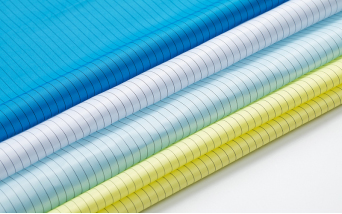
Understand the differences between anti-static, static dissipative and conductive fabrics
2023-09-26 16:53
The need for static control is particularly important in all walks of life, and to address varying degrees of static problems, manufacturers have developed different types of fabrics, each with unique properties and applications. During the communication process with customers, we are often asked whether our company's fabrics support antistatic, conductive or dissipative. This is actually a complex question that requires some knowledge of electrical engineering. In order to save you time, we have prepared today’s article to unveil the mystery of anti-static fabrics and dissipative and conductive fabrics, as well as the differences between them.
Anti-static fabric:
Anti-static fabrics are designed to reduce the generation and build-up of static electricity. But it cannot conduct the charge to the ground.
Therefore, anti-static fabrics are usually used in situations where static interference needs to be reduced, but static electricity does not need to be completely eliminated. Office chairs, anti-static carpets, and everyday clothing may all be made of anti-static fabrics.
Electrostatic discharge fabric:
Electrostatic discharge fabrics are designed to control the build-up of static electricity and slowly and safely release the charge to the ground or other conductive media, striking a balance between preventing charge build-up and controlling discharge.
Electrostatic discharge fabrics are typically used in environments where static electricity needs to be controlled and the charge must be safely discharged. For example, this type of fabric is commonly used in clean rooms, electronics manufacturing, chemical plants, and flammable gas environments.

Conductive fabric:
Conductive fabrics have high conductive properties and can effectively and quickly conduct electrostatic charges to the ground or conductive media. They are designed not only to control static electricity, but also to eliminate it completely.
Conductive fabrics are primarily used in environments where even a small amount of static electricity can cause serious problems. These environments include the aerospace industry, electronics manufacturing and hazardous explosive environments to ensure safe and rapid discharge of charge.
In summary, fabric selection depends on specific application needs and environmental conditions. Anti-static fabrics are suitable for minimizing static electricity, static-dissipative fabrics provide a balance of controlled discharge in sensitive environments, and conductive fabrics are used to completely eliminate static electricity in high-risk environments.
Our company has a variety of fabric products, please click here for related product information. If you need our help in determining what type of fabric you need to meet your production needs, please feel free to contact us!








